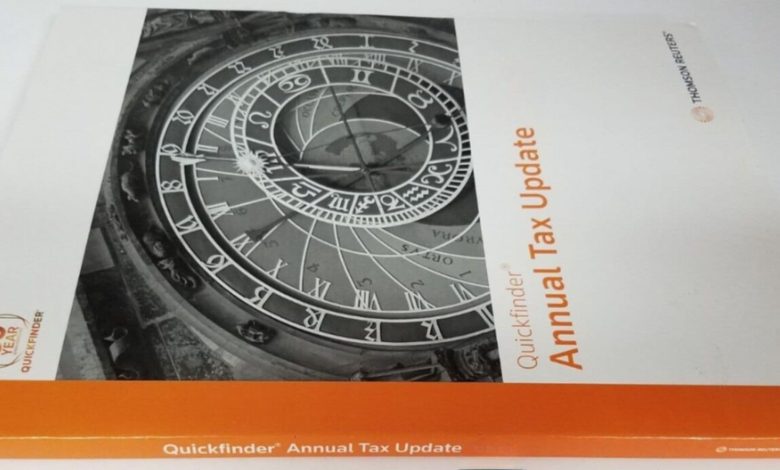
Tax Planning for Individuals Quickfinder Handbook is a practical, quick-reference companion for optimizing deductions, credits, and timing strategies across income, investments, retirement, education, housing, charitable giving, and estate considerations—designed to make year‑round tax planning smoother, faster, and more accurate for individuals and families. In this long-form guide, “Tax Planning for Individuals Quickfinder Handbook” anchors a clear overview of core concepts like marginal tax rates, standard vs. itemized deductions, tax-loss harvesting, retirement contribution limits, Roth conversions, AMT awareness, net investment income tax, Qualified Opportunity Zones, charitable bunching, 529 plans, HSAs, QSBS, and estate/gift planning—organized for quick scanning and decision-making without unnecessary repetition. You’ll find checklists for year-end planning, quarterly estimated taxes, withholding tune-ups, documentation best practices, and proactive strategies before major life events, plus practical tips on coordinating retirement drawdown and Social Security timing to reduce lifetime taxes.
What This Handbook Is (And Why It Helps)
- A quick-reference resource: charts, examples, and bite-sized explanations to act fast and avoid missing annual deadlines.
- A planning-first approach: structure income, deductions, and investments across the year—don’t “wing it” at filing time.
Core Foundations: Rates, Brackets, And Filing Status
- Master marginal brackets and phaseouts to optimize income timing, deductions, and credits.
- Confirm filing status early (single, joint, head of household) to prevent withholding mistakes and credit miscalculations.

Standard Vs. Itemized Deductions: The Bunching Play
- Use “bunching” to stack itemizable expenses (charity, SALT within caps, mortgage interest) in alternating years.
- Track medical expenses, charitable gifts, and mortgage interest with clean documentation to unlock deductions.
Income Smoothing And Estimated Taxes
- If self-employed or with variable income, align quarterly estimated tax payments with cash flow to avoid penalties.
- Adjust Form W‑4 midyear after raises, bonuses, or freelance spikes; revisit after life changes.
Investment Tax Planning: NIIT, Capital Gains, And Harvesting
- Plan for the 3.8% net investment income tax when modified AGI crosses thresholds; use placement and timing to mitigate.
- Harvest losses to offset gains, watch wash-sale rules, and use asset location: tax-inefficient funds in tax-advantaged accounts.
Retirement Contributions And Roth Strategy
- Max 401(k)/403(b) contributions and evaluate traditional vs. Roth based on current vs. future bracket expectations.
- Consider backdoor Roth or mega backdoor Roth when allowed; model five-year rules and conversion timing.

Social Security And Drawdown Timing
- Coordinate Social Security with RMDs, Roth conversions, and Medicare IRMAA thresholds to minimize lifetime tax.
- Use a “bridge” strategy (taxable and tax-deferred withdrawals) pre-RMD years to flatten future bracket spikes.
Education And Family: 529s, Credits, And Kiddie Tax
- Fund 529 plans for tax-deferred growth and potential state tax benefits; time qualified expenses with withdrawals.
- Weigh AOTC vs. LLC education credits; avoid double-dipping with 529 withdrawals for the same expenses.
Health Savings And FSAs
- HSAs offer triple tax advantages: deductible contributions, tax-deferred growth, and tax-free qualified withdrawals.
- Right-size FSA elections to match expected costs; avoid forfeitures and coordinate with HSA eligibility rules.
Homeowners, Real Estate, And Section 121
- Track basis adjustments (improvements) and leverage the primary residence exclusion under Section 121 on sale.
- For rentals, document passive activity grouping, material participation, depreciation schedules, and safe-harbor elections.

Charitable Giving: Bunching, DAFs, And Appreciated Assets
- Use donor-advised funds to bunch deductions in high-income years while granting over time.
- Donate appreciated stock to avoid capital gains and potentially increase the deduction value.
Small Business, Solo Pros, And Creators
- Optimize entity choice (Schedule C vs. S corp), accountable plans, retirement plans (Solo 401(k)/SEP), and QBI eligibility.
- Track home office, vehicle, and equipment expenses meticulously; align payroll and distributions with safe-harbor logic.
Alternative Minimum Tax (AMT) And Phaseouts
- Stress-test AMT exposure before exercising ISOs or realizing large deductions; time events to stay under AMT triggers.
- Monitor phaseouts for credits and deductions; strategically shift income or deductions across tax years.
Estate And Gift: Annual Exclusions And Portability
- Use annual exclusion gifts, 529 superfunding, and spousal portability with thorough records.
- Consider trusts, beneficiary designations, and step‑up in basis planning alongside state estate tax rules.
Crypto, Equity Comp, And Special Situations
- For crypto, document basis, lots, and transfers; plan harvest windows and understand taxable events on swaps/sales.
- For stock comp (RSUs, ISOs, NSOs), model tax timing, AMT exposure, and same-day sale strategies vs. long-term holds.
Year-End And Life-Event Checklists
- Before year-end: max retirement/HSA, harvest losses, bunch giving, review withholding, prepay deductible expenses where practical.
- Life events (marriage, divorce, birth, home sale, new business): recalibrate filing status, benefits, credits, and estimated taxes.

Documentation And Workflow: Make April Easy
- Keep digital receipts, brokerage 1099s, cost basis reports, W‑2s, K‑1s, 1099-NECs, 1098s, and charitable acknowledgments in one folder.
- Maintain a tax calendar for quarterly payments, RMDs, and contribution deadlines (including IRA and HSA extensions).
Putting It All Together: A Simple Sequence
- Map income and deductions by quarter, not just at year-end.
- Choose the right accounts, automate contributions, and revisit elections after any major life event.
Helpful Glossary Highlights
- NIIT: a 3.8% surtax on net investment income above thresholds.
- QBI: potential deduction for qualified pass-through income, with limits and phase-ins.
- Basis: the starting value used to determine gain or loss on sale.

FAQs
- What Is The Quickfinder Handbook For Individuals?
A concise, practitioner-grade reference that helps plan, not just file, with charts, examples, and checklists. - Is Year-Round Tax Planning Really Necessary?
Yes—timing income, deductions, and contributions during the year often saves more than last-minute moves. - Should I Choose Roth Or Traditional?
It depends on current vs. expected future brackets; many blend both to keep future flexibility. - What’s “Bunching” Deductions?
Stacking itemizable expenses in one year to exceed the standard deduction, then taking the standard the next year. - How Do I Lower Investment Taxes?
Use loss harvesting, asset location, donation of appreciated assets, and timing of capital gains.